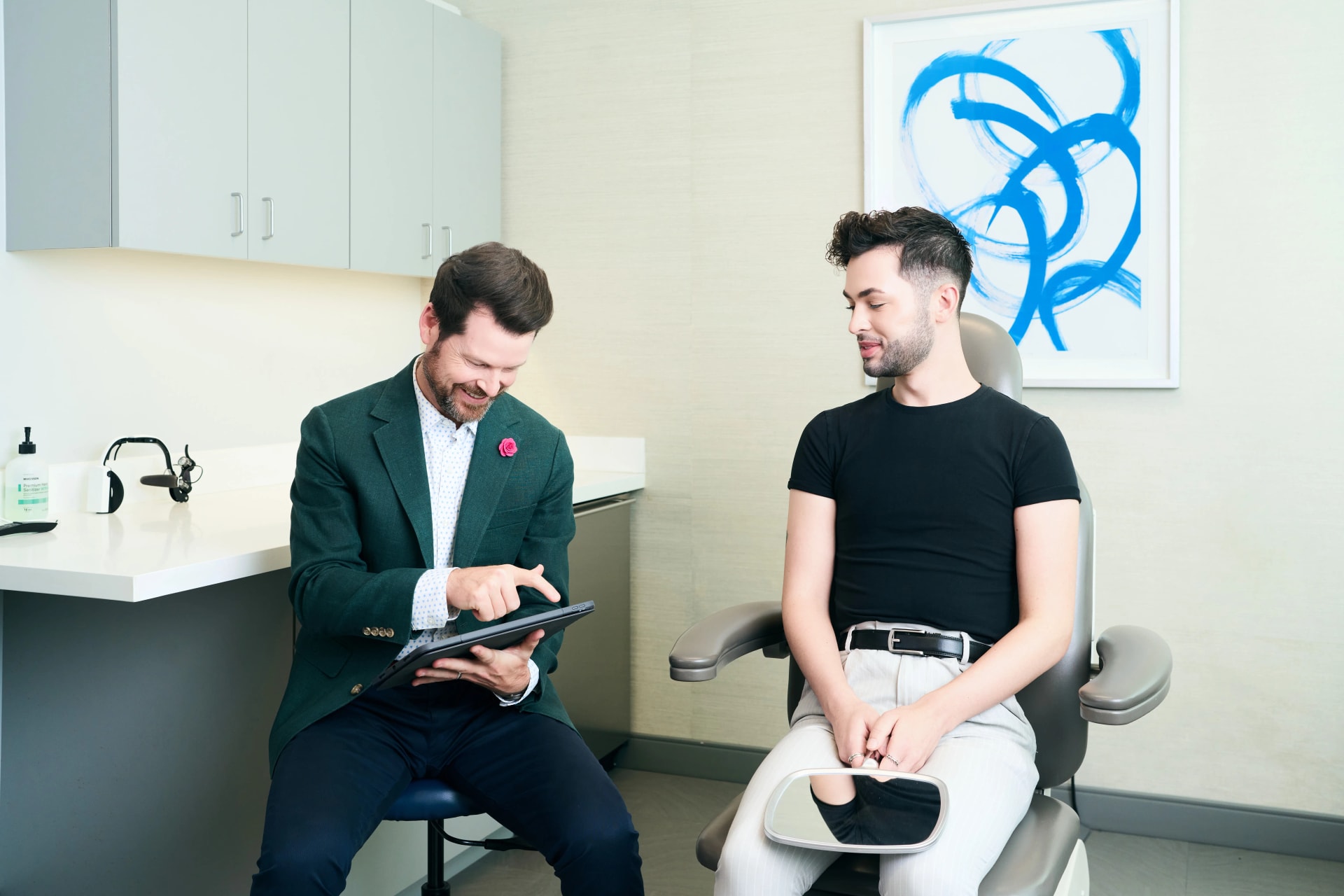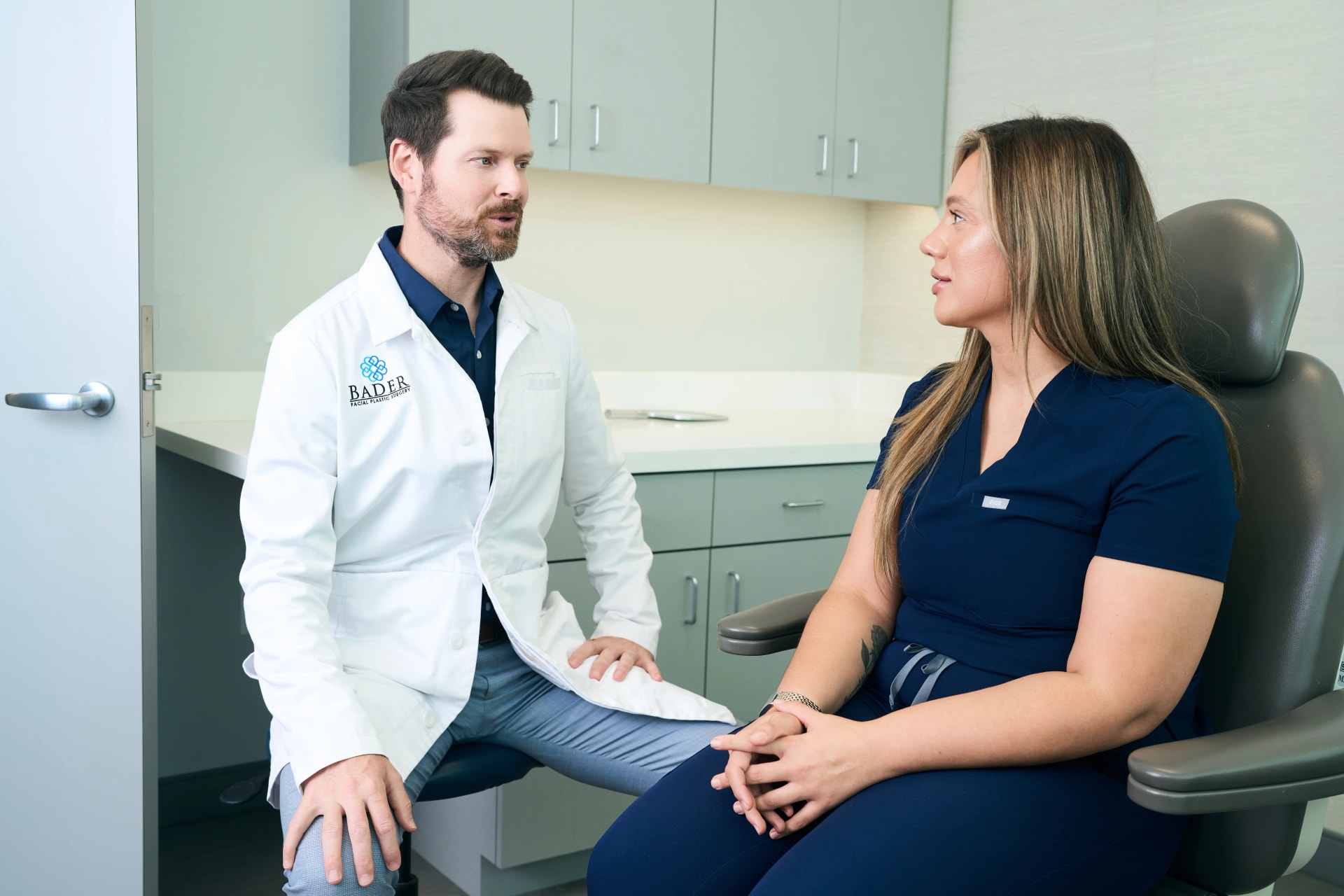Facial Paralysis
What Is Facial Paralysis?

Common Facial Paralysis Causes
Dr. Bader’s Expertise in Facial Paralysis
Dr. Bader is a double-board-certified facial plastic surgeon with over 20 years of experience in treating advanced facial conditions like facial paralysis. Known for his personalized care and natural-looking results, he combines comprehensive expertise with cutting-edge treatments to restore facial function and confidence. At his Plano clinic, Dr. Bader offers innovative solutions that are adapted to your condition, ensuring optimal outcomes in a compassionate, patient-first environment.
D Magazine’s Best Doctor for 10 consecutive years
Fellowship Trained at the Ohio State University


Facial Paralysis Symptoms
Recognizing facial paralysis symptoms early, such as drooping or difficulty smiling, is crucial for accurate diagnosis and prompt treatment. Some of the symptoms may be:
Initial Symptoms of Facial Paralysis
- Sudden drooping or weakness on one side of the face
- Difficulty closing one eye or blinking
- Loss of smile symmetry
- Pain or discomfort around the jaw or behind the ear (often in Bell's palsy)
- Numbness or tingling on one side of the face
Overtime Symptoms (If Untreated)
- Increased facial drooping or inability to raise the eyebrow
- Difficulty speaking or pronouncing words clearly
- Loss of taste on the front two-thirds of the tongue
- Trouble eating or drinking due to difficulty with lip control
- Dry eye or mouth from inability to blink or close the eyelid completely

What to Expect From Choosing Dr. Bader
With extensive expertise in cosmetic and reconstructive surgery, Dr. Bader is recognized as one of the leading facial surgeon specialists in Plano. If you've experienced facial paralysis, it's crucial to seek prompt medical care to prevent complications and accelerate recovery. At Bader Facial Plastics, we offer specialized treatment for all types of facial paralysis, with a commitment to achieving natural-looking and long-lasting results that enhance both function and appearance.
Common treatment options include:
-
Medications: Corticosteroids are often prescribed to reduce inflammation and improve recovery, especially in cases like Bell's Palsy. Also, antiviral medications may be used if a viral infection (such as herpes simplex) is involved.
-
Physical Therapy: Facial exercises help strengthen the facial muscles and improve movement. Dr. Bader will guide you through exercises to restore muscle control and prevent contractures. Massage therapy can also help relax facial muscles and stimulate nerve activity.
-
Surgical Options: Dr. Bader is well-versed in a variety of surgical solutions for facial paralysis. Nerve repair or grafting may be necessary for cases of traumatic or congenital facial paralysis. In addition, Facial reanimation surgery (e.g., muscle transfers, nerve grafts) aims to restore facial movement and symmetry.
-
Botox For Facial Paralysis: Botox can help balance facial muscles and reduce symptoms like spasms or involuntary muscle movement in cases where facial paralysis has led to asymmetry.
-
Electrical Stimulation: Electrical stimulation of the facial nerve may be used to encourage muscle movement and help prevent muscle atrophy.
-
Eye Care: If paralysis affects eye closure, protective measures like lubricating eye drops or an eye patch may be necessary to prevent damage to the cornea.
-
Speech and Occupational Therapy: For individuals who experience difficulty speaking, eating, or drinking, speech therapy can help improve function and communication.
The specific treatment plan will depend on the cause of the paralysis, the severity of the symptoms, and how early the condition is addressed. Dr. Bader will assess you from the first day you may notice some symptoms, as early intervention is key to improving outcomes.
Potential Risks of Facial Paralysis Treatments
When undergoing treatment for facial paralysis, it’s important to understand the potential risks associated with different approaches. While treatments like medications, physical therapy, and surgery can offer significant benefits, they also come with certain complications. Under the expert care of Dr. Bader, the risks are minimized, as his extensive experience ensures that each treatment plan is created to achieve the best possible outcome with the least chance of complications. Any possible risks are openly and honestly discussed during the initial consultation.
Facial Paralysis Recovery
Recovery from facial paralysis depends on the underlying cause, severity, and the treatment approach. In the early stages, rest and medications such as steroids or antivirals are often prescribed to reduce inflammation and aid recovery. Patients with conditions like Bell’s palsy typically monitor their symptoms for several weeks. If eye closure is affected, extra care, including lubricating drops or an eye patch, may be needed to prevent complications.
As recovery progresses, physical therapy and facial exercises are introduced to help restore muscle strength and movement. Gradual improvements are common within the first few months, with many patients regaining partial or full function. In more severe cases, such as those caused by trauma or stroke, recovery may require surgical treatments like nerve repair or facial reanimation surgery.

Ready to Restore Your Smile and Confidence? Contact Dr. Bader

